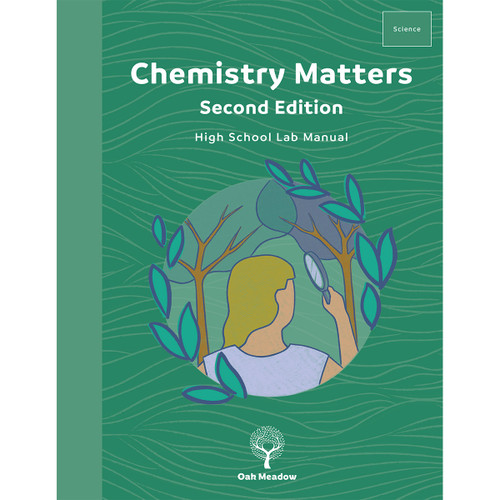What's Included
The following materials are included in the course package:
- Chemistry Matters Coursebook Second Edition
- Chemistry Matters Lab Manual Second Edition
- Living by Chemistry
- Napoleon’s Buttons: 17 Molecules That Changed History
- Chemistry Lab Kits: Hands-On Labs Chem 1 and Hands-On Labs Chem 2
Additional Materials Needed
These materials are suggested for this course but are NOT included in this course package and must be purchased separately.
- Students will need a scientific calculator and a camera to photograph their activities and labs.
- There are a number of household items that are used in labs. A full list is posted on the Chemistry Matters Lab Kit page.
- Chemistry Matters Teacher Edition Second Edition (optional but recommended)
Course Overview
Course Length: Full year
Suggested Grade Level(s): 11 12
View samples of our high school curriculum here.
Chemistry is the study of matter through observation and experimentation. In this course students get a rigorous hands-on introduction to the topics tools terms mathematics and practices of the study of chemistry.
This full-year course includes 16 labs plus dozens of hands-on activities inquiry-based quick labs written assignments and creative ways to explore chemistry principles and their real-world applications. Many activities use standard household items while the more specialized tools and substances are included in the two accompanying lab kits. The scientific method data analysis and powers of observation and critical thinking to solve a problem are addressed in all aspects of the course.
Students interested in pursuing the sciences will gain a solid foundation to be successful in introductory college level courses while those not pursuing the sciences won’t feel overwhelmed by the depth of the information covered. This course is based on Next Generation Science Standards (NGSS). Suggested prerequisite: Algebra I
Labs:
- Laboratory Techniques and Measurements
- Molecular Modeling and Lewis Structure
- Naming Chemical Compounds
- pH of Common Materials
- Properties of Gases
- Stoichiometry of a Precipitation Reaction
- The Mole Concept: Chemical Formula of a Hydrate
- Titration for Acetic Acid in Vinegar
- Antacid Analysis and Titration
- Caloric Content of Food
- Colligative Properties and Molar Mass Determination
- Electrochemical Cells and Cell Potentials
- Le Châtelier’s Principle
- Quantitative Spectroscope and Visible Light
- Reaction Order and Rate Laws
- Using Buffers







